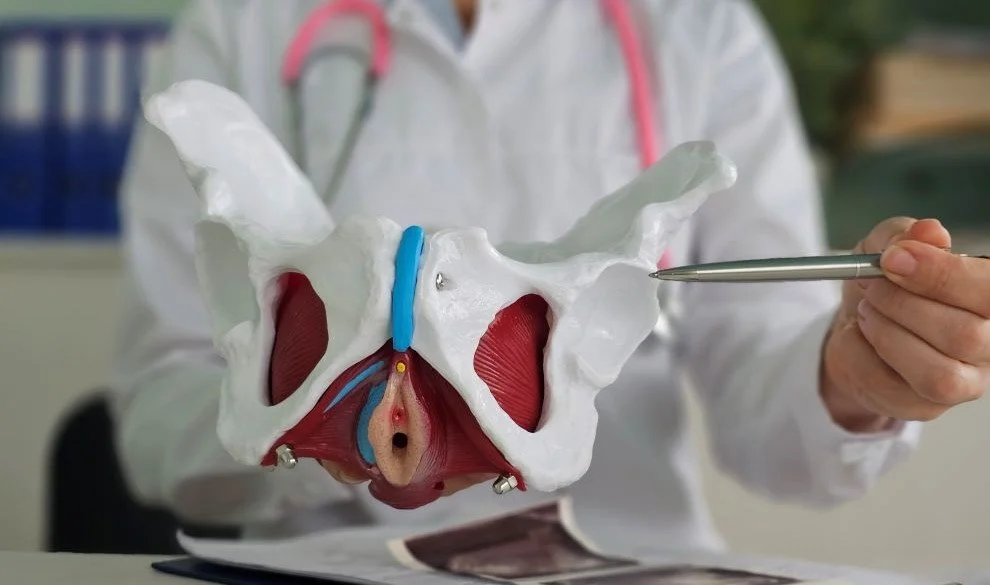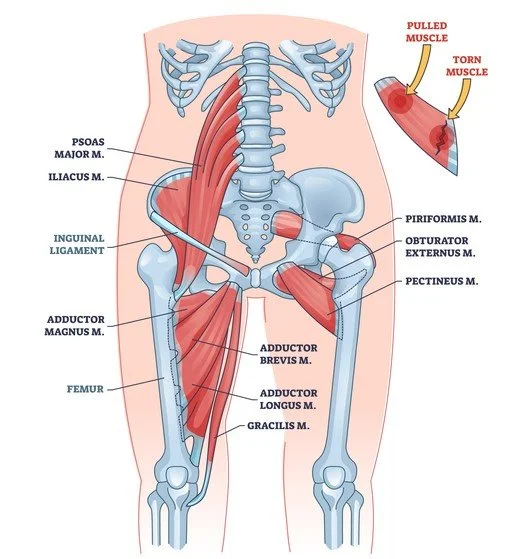Groin Muscle Pulls: How Physiotherapy Can Help You Recover Faster
A groin strain, often called a pulled groin, occurs when the adductor muscles on the inner thigh are overstretched or torn. These muscles help stabilise the hip and bring the legs together, so an injury can make everyday movements — like walking, lifting your leg, or getting in and out of a car — painful and difficult.
Groin injuries are common in sports that involve sudden changes in direction, such as football, hockey, soccer, and running. They can also occur from overstretching, awkward slips, or explosive movements during training.
Getting the right treatment early makes all the difference. Physiotherapy plays a key role in managing pain, restoring movement, and rebuilding strength — helping you return to normal activity faster and with less risk of re-injury.
At Ducker Physio in Adelaide, we treat all grades of groin strain, from minor discomfort to more severe muscle tears. Whether you’re an athlete or someone who’s simply overdone it, our team is here to support your recovery every step of the way.
What Is a Groin Muscle Pull?
A groin muscle pull — also known as a groin strain — happens when the muscles on the inside of your thigh are overstretched or torn.
These muscles, called the adductors, run from your pelvis down to your thigh and help bring your legs together and stabilise your hips during movement.
When these muscles are put under too much stress — through sudden movements, overstretching, or heavy exercise — the muscle fibres can become damaged. You’ll usually feel pain in the inner thigh or groin area, especially when lifting your leg, squeezing your legs together, or changing direction.
Groin muscle injuries range in severity:
A strain means the muscle fibres are overstretched or slightly torn.
A complete tear is more serious and involves a full rupture of the muscle or tendon.
Physios classify groin strains into three grades:
Grade I (Mild): Minor overstretching or microscopic tears. You may feel tightness or discomfort but can usually keep moving.
Grade II (Moderate): Partial tearing of the muscle. This often causes pain, swelling, and difficulty with certain movements.
Grade III (Severe): A complete tear of the muscle or tendon, often with significant pain, bruising, and loss of function.
Understanding the severity of your groin strain helps guide the right rehab plan — and that’s where physiotherapy comes in.
Signs and Symptoms of a Groin Strain
A groin strain can vary from a mild twinge to severe pain, depending on how badly the muscle is damaged. Some of the most common signs and symptoms include:
Sudden sharp or pulling pain in the inner thigh or groin, often during a sudden movement like kicking or twisting
Swelling or bruising in the affected area, which may develop soon after the injury
Difficulty walking, running, or changing direction, especially during weight-bearing movements
Pain when lifting the leg or squeezing the thighs together, such as when climbing stairs or getting in and out of a car
A popping or snapping sensation at the moment of injury, which may indicate a more severe tear
If you're experiencing these symptoms, especially if the pain persists or worsens, it’s important to get assessed by a physiotherapist to guide your recovery and avoid further damage.
Targeted Exercise Rehabilitation
Rehabilitation for a groin strain isn’t just about rest — it’s about gradually rebuilding strength, flexibility, and control through a structured, phased approach. At Ducker Physio, we guide you through each stage to make sure your recovery is safe, effective, and tailored to your lifestyle or sport.
Early Stage: Restore Movement Without Aggravation
In the first phase, the focus is on reducing pain and restoring gentle movement.
We use:
Range of motion exercises to keep the hip joint mobile
Isometric holds (like adductor squeezes) to maintain muscle activation without causing further strain
Mid Stage: Build Strength and Control
Once pain reduces and movement improves, we move into strengthening.
This includes:
Bodyweight and resistance exercises to rebuild the inner thigh muscles
Copenhagen planks and hip bridges, which specifically target the adductors and surrounding stabilisers
Progressive loading to improve tolerance to daily or sporting movements
Late Stage: Return to Performance
The final stage prepares you for a confident return to your usual activity — whether that’s walking the dog or competing in sport.
We focus on:
Sports-specific drills like cutting, sprinting, or lateral movement
Explosive strength and coordination exercises
Neuromuscular control and balance training to reduce re-injury risk
Throughout all stages, we also emphasise core strength and pelvic stability, as weakness in these areas is often linked to groin injuries. Strengthening the muscles around the hips, lower back, and pelvis helps improve biomechanics and supports a long-term recovery.
Pain Management and Early Injury Care (RICE)
Managing pain effectively in the first few days after a groin strain is crucial for recovery. At Ducker Physio, we combine hands-on treatment with early injury care strategies like RICE to help reduce discomfort and support healing.
RICE for Groin Strains
In the first 48 to 72 hours, we recommend the RICE approach to manage acute symptoms:
Rest: Avoid movements that aggravate the injury, but don’t go completely inactive. Gentle, pain-free mobility helps circulation and prevents stiffness.
Ice: Apply an ice pack to the groin for 15–20 minutes every few hours to reduce pain and swelling.
Compression: Supportive shorts or gentle compression garments can help limit swelling and provide mild support.
Elevation: While more challenging for groin injuries, lying down with the hips slightly elevated may offer comfort.
Hands-On Pain Relief
In addition to RICE, your physio may use:
Manual therapy techniques to reduce muscle tightness, improve circulation, and ease discomfort
Guided movement and positioning to offload the injured muscle while keeping you active
Heat therapy later in the recovery process to relax tissues and prepare for strengthening exercises
Load Management
We’ll also advise on the right balance between rest and activity — helping you stay mobile without overloading the healing muscle. This tailored approach ensures you recover faster, avoid setbacks, and stay on track for full recovery.
Groin Strains in Athletes – What to Know
Groin strains are particularly common in sports that involve explosive movements, sprinting, or sudden changes in direction — think football, soccer, hockey, and AFL. These movements place high stress on the adductor muscles, making them more vulnerable to muscle strains.
One of the biggest risks with groin injuries in athletes is returning to sport too soon. Without proper rehabilitation, the risk of re-injury is significantly higher. Many athletes feel better once the pain subsides, but the underlying strength and stability often haven’t fully recovered.
At Ducker Physio, we place strong emphasis on:
Graded strength testing to ensure the injured side matches the uninjured side
Sport-specific movement screening to assess control, power, and load tolerance
Progressive return-to-play planning to safely reintroduce sport drills, training intensity, and competition
Taking the time to recover properly not only prevents re-injury — it improves long-term performance and confidence on the field.
Need a Sports Physio in Adelaide?
Our team has extensive experience working with athletes of all levels — from weekend warriors to competitive players. Whether you’re recovering from a muscle strain or looking to prevent it from happening again, we can help.
Book your session at our Magill or Salisbury clinic today and get back to doing what you love — stronger, safer, and more confident.



